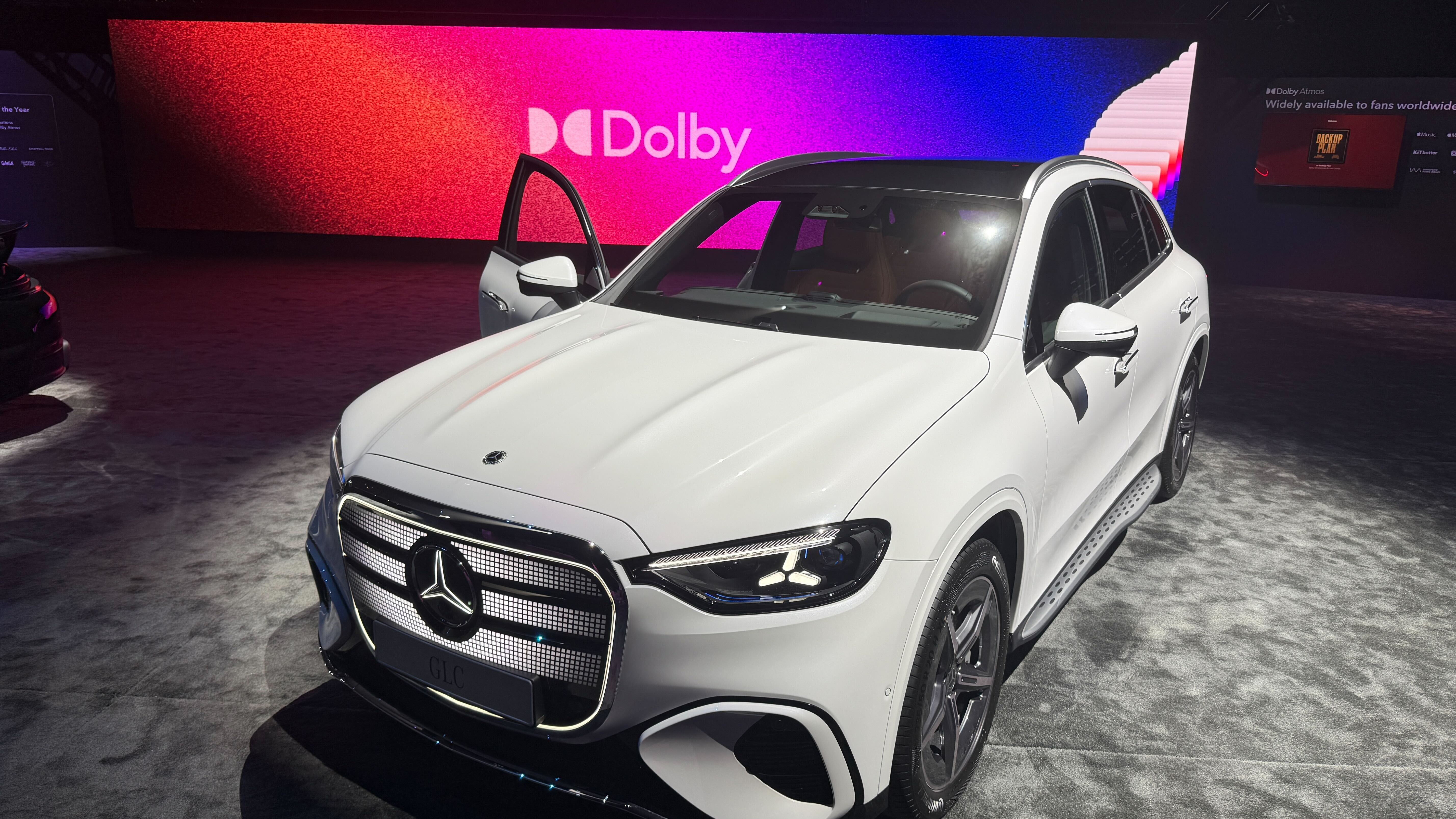LG 2022 TV lineup: everything you need to know
More OLED Evo, 97-inch and 42-inch OLED models, a move away from NanoCell and 48Gbps HDMI 2.1 sockets

LG's entire TV range for 2022 are all available to buy now, with options ranging from super-premium 97-inch OLEDs all the way down to entry-level LED 4K sets. We've had plenty of hands-on time with many of these TVs so you can find our thoughts on each model in our various LG TV reviews, as well as checking out what we think are the best LG TVs.
The resounding success of the OLED Evo panel in the premium G range has earned it an extension into the C series, meaning there's now a more affordable way to get a brighter OLED picture. And there are more sizing options available than ever before with the introduction of 97-inch and 83-inch G2 models and a 42-inch panel for the C2.
Gamers continue to be well served with new modes, menus and HDMI 2.1 uncapped to a future-proofed 48Gbps. There's also an updated version of the Alpha processor for 2022, with new picture and sound technologies, plus an updated version of the WebOS with greater options for personalisation.
In the world of LCD, the brand is moving away from NanoCell in favour of Mini LED-based QNED sets.
There's plenty to discuss, so let's get started.
LG OLED Evo range expands

Before last year, the C-class model had been the sensible choice of each new LG OLED range. It represented the best visual bang for your buck with a flagship panel and picture processing, without the sound, niche design and high price point of the more premium ranges. So we were disappointed to find that in 2021, that wouldn't be the case as LG introduced a new OLED Evo panel with increased brightness and sharpness but restricted it to the premium G1.
This year, though, both the G2 and C2 are OLED Evo ranges, so you'll now be able to get the brighter picture at a lower price and with a less niche design. The 2022 OLED Evo technology is apparently better than before, too, thanks to a reformulated panel and processor.
The latest hi-fi, home cinema and tech news, reviews, buying advice and deals, direct to your inbox.
The G2 will still have an advantage over the C2, though, in the form of additional heat dissipation technology that LG says will make it even brighter in both peak and average nits.
OLED.EX
It’s not just the top of the range that is getting a brightness boost in 2022. LG Display – suppliers of panels to LG, Sony, Panasonic and many others – has announced that some of the innovations of OLED Evo will be implemented more generally with the introduction of ‘OLED.EX’ screens.
OLED.EX (an acronym of ‘Evolution’ and ‘eXperience’) uses deuterium and proprietary algorithm-based ‘EX Technology’ to help increase brightness by a claimed 30 per cent compared to conventional OLED displays. The company says that EX.Technology can predict the usage amount of each individual diode based on your viewing habits to more precisely control the display’s energy input and therefore ‘more accurately express the details and colours of the video content being played’.
As deuterium is more efficient and stable than the hydrogen-based compounds currently used, it has a longer lifespan and requires less cooling, meaning that overall panel thickness is reduced by 30 per cent compared to existing panels – this brings a 65-inch OLED panel down from 6mm to a wafer-thin 4mm.
It’s not clear exactly which models and screen sizes will benefit from OLED.EX but the technology will be integrated into all OLED TV displays manufactured at LG Display's production plants in Paju, South Korea, and in Guangzhou, China, starting from the second quarter of 2022.
Screen sizes and design

Over the past two years, the rise in home viewing and gaming has encouraged LG to increase its panel range at both ends of the spectrum: there's now a whopping 97-inch panel and a far more modest 42-inch version.
The G-range acquires the super-sized 97-inch screen as well as an 83-inch option, which was last year limited to the Z1. Meanwhile, the popularity of the 48-inch C1 with gamers and those with less room has prompted the addition of a 42-inch C2 to the family. However, potential buyers should note the 48-inch and 42-inch OLEDs won't go as bright as their larger siblings.
Both the G and C series sport slimmed-down bezels, from 10.2mm down to 6mm, while the G2 also does away with the 45-degree Chamfered edges of the G1 in favour of cleaner right angles.
Anyone who's ever struggled to hang a TV on a wall, or even get it out of the box, will appreciate that the G2 is 20% lighter than last years G1 while the C2 weighs a massive 47% less than the C1. This is down to a new composite fibre material of PET sandwiched between layers of aluminium used for cabinet construction, meaning that the G and C models are easier to handle and produce fewer carbon emissions to transport.
Alpha 9 Gen 5 processor
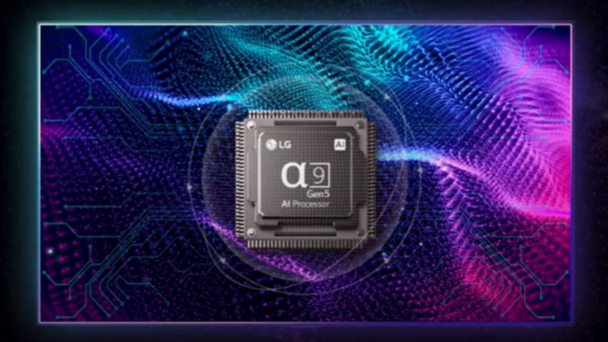
LG's 2022 OLEDs have the latest version of its Alpha 9 processor, now in its fifth generation, with iterative improvements to its picture and sound technology. There is still the same Clearer Text, Auto Genre Selection and Genre Optimisation as before, as well as last year's upgrades, which include Object Enhancement, Scene Detection and Auto Volume Levelling.
AI upscaling has been modified to improve its efficiency, removing a step that could potentially add unwanted artefacts, while a new Dynamic Tone-mapping Pro Algorithm subdivides the screen into more discrete areas (by an order of 10) for more granular enhancement.
Object Background Enhancement also gains a Dynamic Vivid Mode that can better differentiate foreground and background, analysing them separately, which LG says creates a greater depth of field.
Finally, AI Sound Pro virtual upmixing increases the number of virtual channels from 5.1.2 to 7.1.2.
LG webOS 22
LG's webOS 22 may have a new year-matched moniker, but feature-wise it isn't a massive departure from its predecessor. Not that it needed to be, as webOS is one of the very best TV operating systems available.
The new operating system further refines the changes made last year, mainly improving personalisation and recommendations, which were the weak points of webOS 6.0.
Users can now create up to six profiles that can be accessed from the home page or via smartphone NFC Magic Tap. Each profile gets personalised viewing recommendations, sport alerts, preferred app lists and bespoke ordering of content shelves.
NFC Magic Tap can also be used to mirror a mobile device to an LG TV screen. Up to four members of the same household can also mirror content from one TV to another using 'Room To Room Share', a function that enables cable or satellite content to be viewed on multiple screens without an additional set-top box.
Also new for 2022, 'Always Ready' is an ambient mode intended for when you're not watching TV but don't fancy having a black rectangle in your room. Instead, the screen can display weather, a clock, art, personnel photos, animation or music with light animation. Models with a far filed microphone (that's the Z2, G2, C2, QNED 99, and QNED90) will now be able to respond to voice commands to LG Assistant when in standby mode, meaning you can check the weather without turning your TV on.
Upgrades to LG's ThinQ AI smart home software also include support for 'Matter' in the latter half of 2022, which will allow your TV to function as a controller for other connected smart devices within your home.
Yet more gaming features, including 48Gbps HDMIs
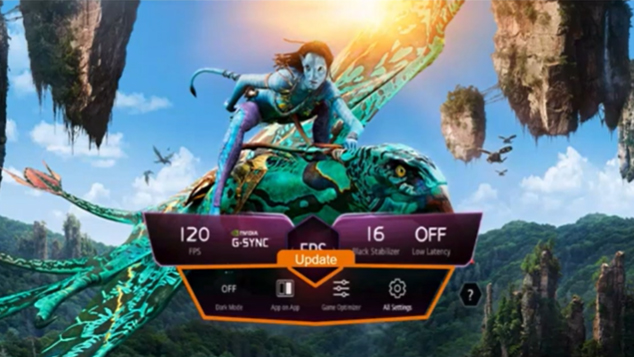
It's fair to say that LG's OLEDs are already the best gaming TVs available, boasting HDMI 2.1 connections that support 4K/120Hz, ALLM (Auto Low Latency Mode), and VRR (Variable Refresh Rate), plus an HGiG and support for G-Sync and Free Sync Premium. Since the latter part of last year, there's even been native integration of cloud-based game streaming services Google's Stadia and GeForce Now.
Improvements for the latest models include an updated Game Optimiser menu with easier access to crucial settings, quick click-through to all controls and, in addition to the four existing game genre presets, a new preset for sports games. How useful this is remains to be seen as when we reviewed the G1 last year, we found that although these features have the potential to give you a competitive advantage by revealing details in the brightest and darkest parts of the picture that you might otherwise miss, they also make the image slightly less accurate. We still prefer to enable HGiG and use your console's (and games') video calibration features to get the most authentic performance.
Although all of last years OLEDs, excluding the A-range, sported HDMI 2.1 ports, there was a mild uproar from some corners of the internet that the bandwidth was capped at 40Gbps. This is more than enough bandwidth for all current video and audio formats (the Xbox Series X and PS5 have HDMI 2.1 bandwidths of 40Gbps and 32 Gbps respectively, for example), but to avoid any further consternation LG has upped the HDMI 2.1 ports of its 2022 OLEDs to 48Gbps. You might not need it just yet, but you can feel confident your LG OLED is at least a little more future-proofed.
While the inclusion of these features varies across the range, all models benefit from a new Dark Room mode to reduce eye fatigue when playing in low light by lowering brightness without sacrificing contrast.
LG 2022 TV range breakdown
In keeping with last years convention, 2022 is the year of '2' models for OLEDs. So the new C-class model is the C2 (replacing C1), and the G-class is G2 (replacing G1). On top of those two ranges, the 8K Z series returns with a sophomore Z2 model, and there are also B2 and A2 entry-level models. There's no word yet on a new 'R' rollable model.
Below the OLEDs, there's a fresh range of QNED TVs, which combine Mini LED-based backlights with a NanoCell layer for an apparently excellent balance of contrast, colours and cost. However, LG has stated that it intends to move away from nano-cell technology and instead focuses on improving precision dimming with Mini LEDs.
LG Z2 8K OLED TV
Although it lacks LG's OLED Evo tech, the top model for 2022 remains the 8K Z2 OLED. The Z2 runs on an 8K-specific version of the Alpha 9 Gen 5 that's designed to make the most of the increased resolution, and it is available in 77-inch and 88-inch sizes.
Like the G2, the Z2 has what LG calls a 'Gallery' design, which means it's very thin and has a flat back that makes it ideal for wall-mounting. Unlike the G2, which comes with a wall-mount only, the 88-inch Z2 comes with a very stylish floor stand, and the 77-inch model seems to include both feet and an integrated flush wall mount.
In our testing of the 77-inch LG Z2, we found that the Z2 delivers a seriously sharp and bright image, and even sounds pretty good as TVs go; but the lack of 8K content and striking similarity to the cheaper G2 made us hesitant to recommend coughing up the extra cash. Read our full LG OLED77Z2 review.
LG Z2 specs:
- Display type: OLED
- Resolution: 8K
- Sizes: 77-inch, 88-inch
- Processor: Alpha 9 Gen 5 8K
- Sound: TBC
- HDMI 2.1: Yes
- Refresh rate: 120Hz
- 4K@120Hz: Yes
LG Z2 pricing:
- LG OLED77Z2 – £12,000 / $13,000 / AU$23,999
- LG OLED88Z2 – £24,500 / $20,000 / AU$59,999
LG G2 OLED Evo TV

While the G2 no longer has the distinction of being the sole model to boast Evo OLED technology, LG insists it will still be the brightest OLED in the range thanks to the addition of a new heat dissipation layer that the company says will improve both peak and average brightness.
Like its predecessor, the excellent G1, the G2 is very thin and resembles a picture frame, ideal for flush-to-the-wall mounting. It's also compatible with LG's easel-like Gallery Stand as well as standard feet. Last year, both the Gallery Stand and the feet were optional extras and not included in the box, and it's the same case this. The optional stand is at least a pedestal with a fairly narrow footprint, as opposed to the unhelpfully wide-set feet of before.
Thanks to a new cabinet constructed of composite material, the G2 is 20% lighter than its predecessor, making it easier to rig, which will come in handy for those opting for the new sizes in the range: 83-inches and a mammoth 97-inch model.
Unfortunately, in the UK the 55-inch and 65-inch versions of the G2 are a fair bit more expensive than their G1 equivalents were at launch, and the same is true in the US of the 65-inch model. Interestingly, the 77-inch model has dropped in price.
We called the LG OLED65G2 the "finest OLED yet" from LG, giving it five stars thanks to its bright picture, deep blacks and punchy colours. It is a little pricier than the C2 (which we'll get onto soon) and the TV's stand is an optional extra which adds to the cost, but that doesn't detract from the awesome picture quality. Read our full LG OLED65G2 review.
LG G2 specs:
- Display type: Evo OLED
- Resolution: 4K
- Sizes: 55-inch, 65-inch, 77-inch, 83-inch, 97-inch
- Processor: Alpha 9 Gen 5
- Sound: 4.2ch, 60W
- HDMI 2.1: Yes
- Refresh rate: 120Hz
- 4K@120Hz: Yes
LG G2 pricing:
- LG OLED55G2 – £2400 / $2200 / AU$4799
- LG OLED65G2 – £3300 / $3200 / AU$6359
- LG OLED77G2 – £4500 / $4200 / AU$11,399
- LG OLED83G2 – £6500 / $6500 / AU$15,599
- LG OLED97G2 – around £21,000, $28,000, AU$38,000
LG C2 OLED Evo TV
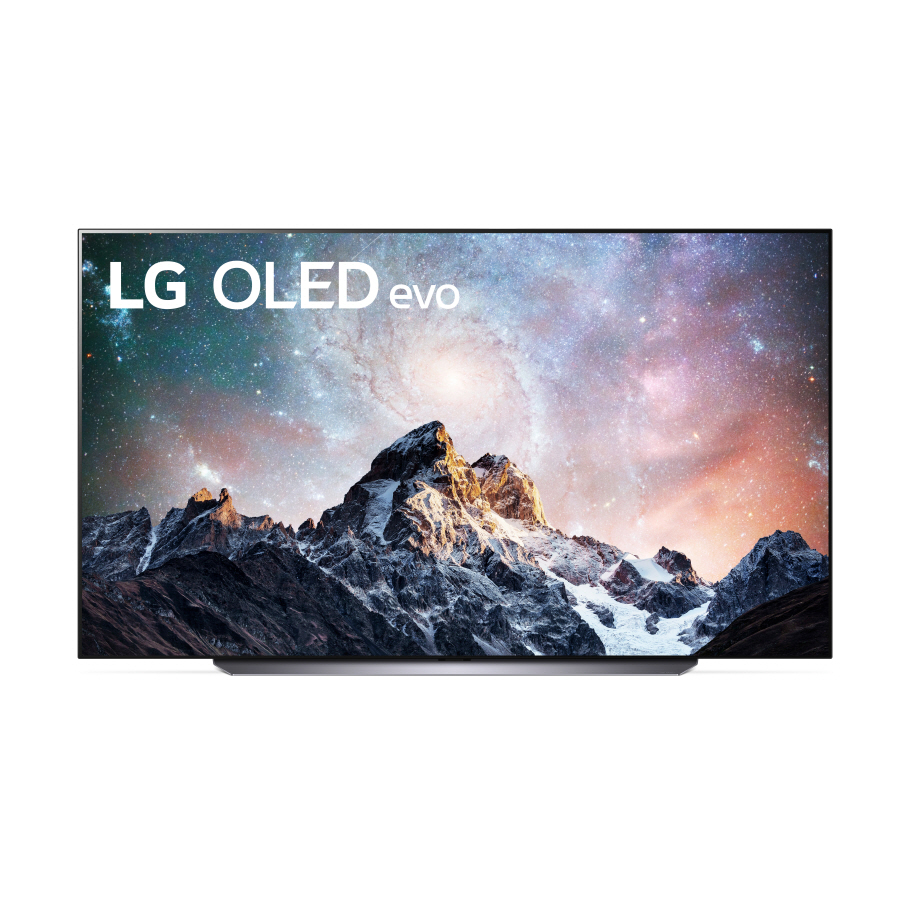
We're pleased to see the success of the Evo panel is now being cascaded down to the C2, bringing the brighter picture performance down to a lower price point.
We'll have to wait to get our hands on both the G2 and C2 to see how much of a difference the former's heat dissipation layer makes, but the C2 looks likely to be a very well-specc'd prospect regardless, with the newest version of the Alpha 9 processor and all of the latest gaming features.
It's is also available in more sizes than any other model in the range, starting at a new 42-inch size and going right up to 83-inches. However, buyers should note that the two smallest sizes – 42-inch and 48-inch – won't be as bright as their larger siblings despite being designated OLED Evo models.
The 48-inch, 55-inch and 65-inch versions of the C2 are more expensive than their C1 equivalents were at launch and the new 42-inch model is no cheaper than the 48 incher, which is a shame. The US has seen no such cross-generational price rises, with those versions of the C2 launching at the same price that the C1 did. In both regions the 77-inch and 83-inch versions are actually cheaper than before.
We've reviewed LG C2 in three different sizes: the compact LG OLED42C2, the middle-of-the-bunch LG OLED65C2, and the big screen LG OLED77C2. Across the board the C2 was super punchy, bright yet natural, and featured an unbeatable feature set when it comes to gaming.
LG C2 specs:
- Display type: Evo OLED for 55-inch and bigger, standard OLED for 42-inch and 48-inch models
- Resolution: 4K
- Sizes: 42-inch, 48-inch, 55-inch, 65-inch, 77-inch, 83-inch
- Processor: Alpha 9 Gen 5
- Sound: 2.2ch, 40W
- HDMI 2.1: Yes
- Refresh rate: 120Hz
- 4K@120Hz: Yes
LG C2 pricing:
- LG OLED42C2 – £1399 / $1400 / AU$3239
- LG OLED48C2 – £1399 / $1500 / AU$3599
- LG OLED55C2 – £1900 / $1800 / AU$4079
- LG OLED65C2 – £2700 / $2500 / AU$5399
- LG OLED77C2 – £3700 / $3500 / AU$9599
- LG OLED83C2 – £5500 / $5500 / AU$13,199
LG B2 4K OLED TV
The B-series lacks the Evo panels of the higher models and has a step-down processor, the Alpha 7 Gen 5. However, it still packs some pretty impressive next-gen technology, including a 120Hz panel, HDMI 2.1 ports that support ALLM (Auto Low Latency Mode) and VRR (Variable Refresh Rate), plus HGiG, G-Sync and FreeSync Premium, making it well suited for gamers.
While we haven't reviewed these cheaper OLEDs, based on what we know from other models we can see some notable features that make the cut on the B2. There is an HDMI 2.1 port for 4K/120 gaming, and the spec sheet reads very similarly to the C2 overall, the main difference appears to be the quantity of said 2.1 HDMIs. However, one major drawback for those potentially after the B2 in Australia, you might be out of luck, as LG doesn't seem to be selling it down under.
LG B2 specs:
- Display type: OLED
- Resolution: 4K
- Sizes: 55-inch. 65-inch, 77-inch
- Processor: Alpha 7 Gen 5
- Sound: 2.0ch, 20W
- HDMI 2.1: Yes
- Refresh rate: 120Hz
- 4K@120Hz: Yes
LG B2 pricing:
- LG OLED55B2 – £1800 / $1500
- LG OLED65B2 – £2600 / $2000
- LG OLED77B2 – £3600 / $3300
LG A2 OLED TV
The A-series has the same processor as the B2 but only sports a 60Hz panel instead of 120Hz. This will likely only be an issue for gamers, who should also note that there's no VRR support or HDMI 2.1 ports, but the A2 is should be well suited for TV and movie watching, with a range of sizes to suit smaller spaces.
The A2 lineup seems to vary the most between markets, with certain screen sizes and prices restricted to specific countries. The bottom line with the A2 is that in many cases its a solid entry-level OLED, however if you can stretch to the B2, and plan on using your TV for gaming, then we'd recommend taking that route.
LG A2 specs:
- Display type: OLED
- Resolution: 4K
- Sizes: 48-inch, 55-inch, 65-inch, 77-inch
- Processor: Alpha 7 Gen 5
- Sound: TBC
- HDMI 2.1: No
- Refresh rate: 60Hz
- 4K@120Hz: No
- VRR: No
LG A2 pricing:
- LG OLED48A2 – £1300 / $N/A / AU$N/A
- LG OLED55A2 – £1700 / $900 / AU$3719
- LG OLED65A2 – £2200 / $1200 / AU$4919
- LG OLED77A2 – £TBC / $TBC / AU$TBC
LG QNED NanoCell 8K and 4K TVs
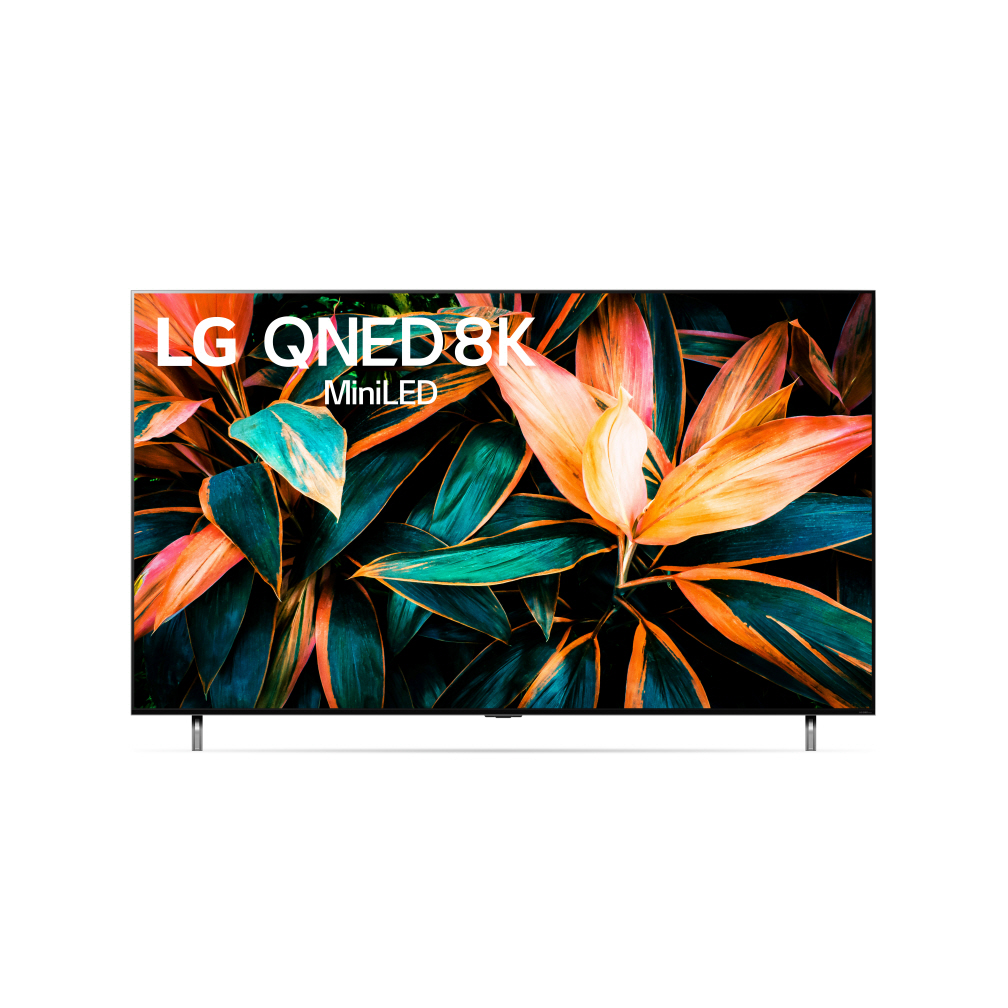
Sitting below LG's OLEDs is a range of QNEDs that combine Quantum Dot and NanoCell technologies, either edge-lit or backlit by MiniLED dimming zones.
NanoCell, which uses a filter to increase colour performance, had previously been LG's premium LED format, but last year the company introduced Quantum Dot NanoCell+ colour technology, expanding the process by using an emissive layer rather than a filter to widen the gamut further.
While the full lineup is yet to be outlined, LG has confirmed a mix of Mini LED (with more precise dimming) and non-Mini LED models. At the top end there is the 8K QNED99 86-inch model, which has around 2400 independent dimming zones (with Precision Dimming Pro+) combined with LG's advanced dimming algorithm.
The QNED90, meanwhile, has Precision Dimming Pro Mini LED technology, and the QNED85 sports standard Precision Dimming. Finally, there's mention of the QNED80, an edge-lit QD NanoCell. All QNED models for 2022 are available in sizes between 55-inches and 86-inches. The 8K QNED99 features the Alpha 9 Gen 5 processor while the three lower models have the step-down Alpha 7 Gen 5.
LG has confirmed there are still be some regular NanoCell models available this year but in the long run it will look to phase them out in favour of QNED.
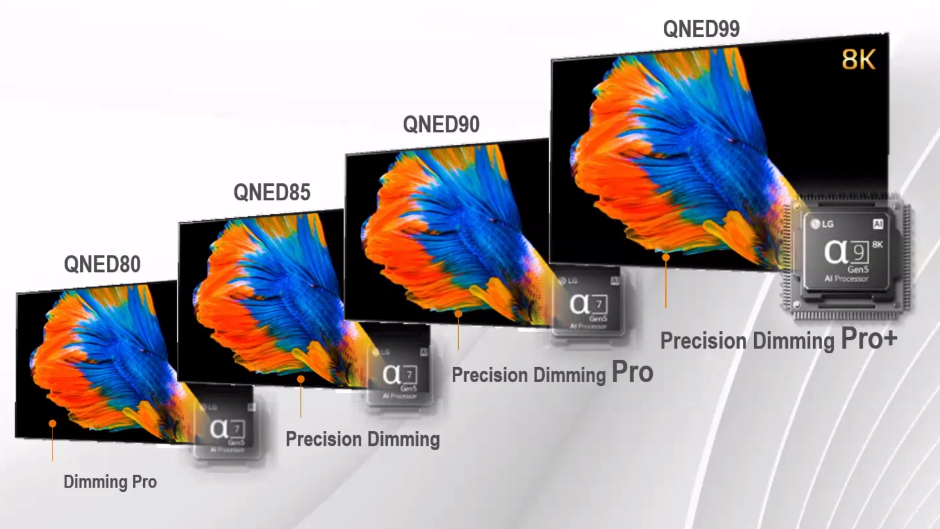
UHD 4K TVs
LG's entry-level 4K UHD TVs are powered by the Alpha 5 Gen 5 processor and feature WebOS 22, dynamic tone mapping, AI brightness, AI sound, Game Dashboard Optimiser, Ambient Mode and multiple profiles. These core, affordable models also have a slimmed-down design featuring a thinner cabinet and bezel.
READ MORE:
Should you consider Samsung's rival QD-OLED technology?
Check out our rundown of the best TVs you can currently buy
Mary is a staff writer at What Hi-Fi? and has over a decade of experience working as a sound engineer mixing live events, music and theatre. Her mixing credits include productions at The National Theatre and in the West End, as well as original musicals composed by Mark Knopfler, Tori Amos, Guy Chambers, Howard Goodall and Dan Gillespie Sells.
